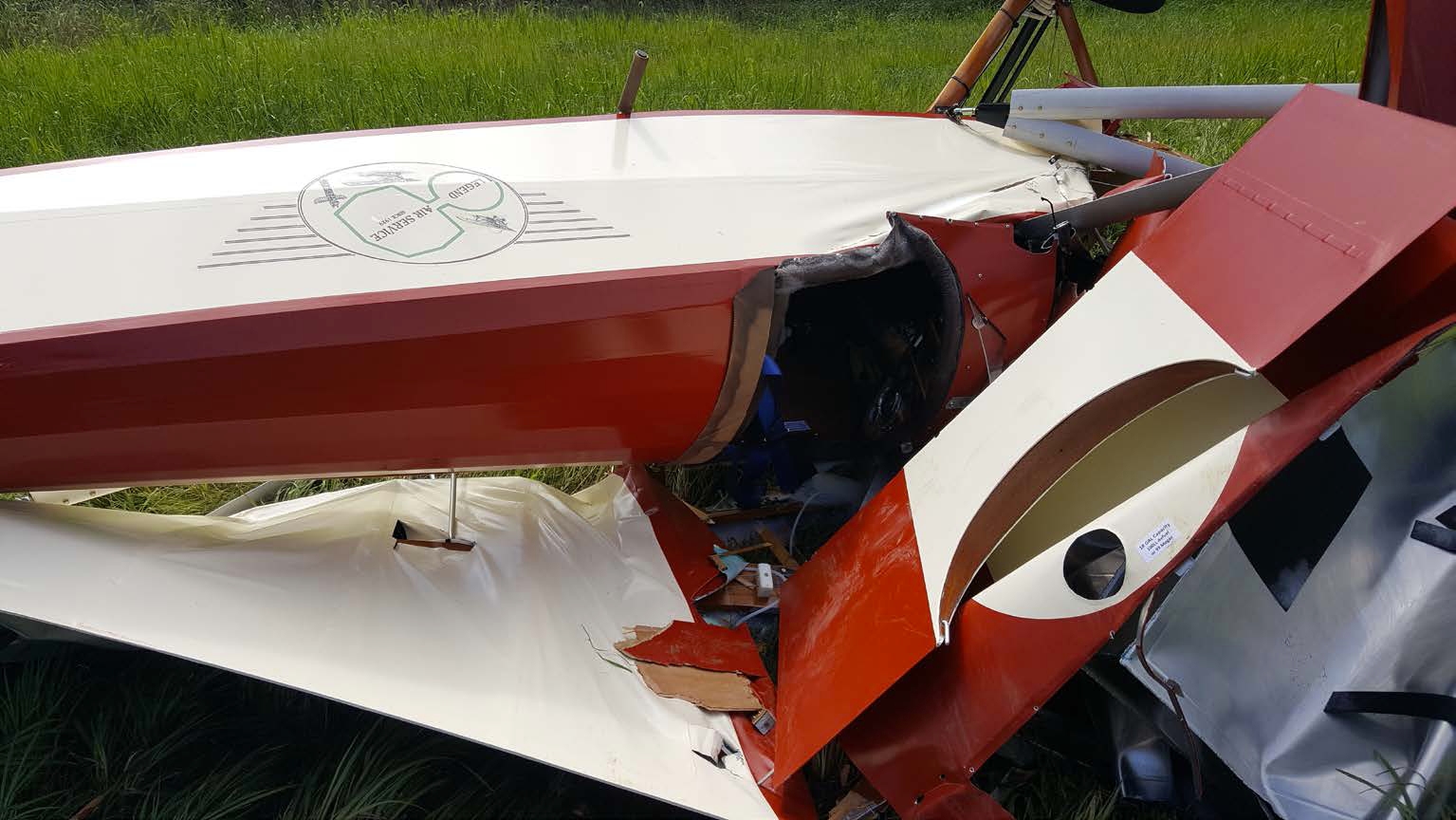
ASN Wikibase Occurrence # 228087
This information is added by users of ASN. Neither ASN nor the Flight Safety Foundation are responsible for the completeness or correctness of this information.
If you feel this information is incomplete or incorrect, you can submit corrected information.
| Date: | Saturday 10 August 2019 |
| Time: | 09:00 LT |
| Type: |  Pietenpol Air Camper |
| Owner/operator: | Private |
| Registration: | N899DA |
| MSN: | 061791AAF618 |
| Year of manufacture: | 2019 |
| Total airframe hrs: | 0 hours |
| Engine model: | Corvair |
| Fatalities: | Fatalities: 0 / Occupants: 1 |
| Aircraft damage: | Substantial |
| Category: | Accident |
| Location: | near Newark–Heath Airport (KVTA), Newark, OH -
 United States of America United States of America
|
| Phase: | Initial climb |
| Nature: | Private |
| Departure airport: | Newark Heath Airport, OH (KVTA) |
| Newark Heath Airport, OH (KVTA) | |
| Investigating agency: | NTSB |
| Confidence Rating: |
Just before takeoff on the first flight in the plans-built airplane, the pilot taxied the airplane and ran the engine to bring it up to operating temperature. After takeoff, the airplane climbed out about 50 mph and the pilot lowered the nose to increase the airspeed to 55 mph. He stated that the airplane seemed to be "behind the power curve" and did not "seem to be producing enough power." Sound from a video of the accident flight showed engine power was consistent throughout the flight.
According to the pilot, about 150 to 200 ft above ground level, the pilot prepared for an off-field landing in a corn field when the wing tips "started to stall" and then the "left wing stalled." The pilot was unable to recover from the stall and the airplane impacted terrain; both wings separated during impact.
The pilot stated that it was likely that the timing slipped or that the mixture on the carburetor needed adjustment, but he did not know the reason for the low engine power on takeoff. A review of meteorological data revealed that the temperature and dew point at the time and location of the accident were conducive for serious icing at glide power. While carburetor icing may have built up during the extended ground run, the sound of the engine during the takeoff did not indicate a loss of power. Investigators were not able to determine the reason for the low engine rpm at takeoff because impact damage to the engine precluded functional testing.
Probable Cause: The engine's failure to produce full power for reasons that could not be determined.
Accident investigation:
 |
|
Sources:
FAA register: https://registry.faa.gov/aircraftinquiry/NNum_Results.aspx?NNumbertxt=899DA
NTSB CEN19LA262
Location
Images:

Photo:FAA
Media:
A minor injury was reported from a plane crash in Heath https://t.co/20jDxpHj5Q
— NewarkAdvocate.com (@NewarkAdvocate) August 10, 2019
Revision history:
| Date/time | Contributor | Updates |
|---|---|---|
| 10-Aug-2019 15:53 | Captain Adam | Added |
| 10-Aug-2019 16:17 | RobertMB | Updated [Time, Aircraft type, Registration, Cn, Location, Departure airport, Source, Narrative] |
| 10-Aug-2019 16:18 | RobertMB | Updated [Location, Narrative] |
| 10-Aug-2019 22:13 | Iceman 29 | Updated [Source, Embed code] |
| 12-Aug-2019 20:59 | Captain Adam | Updated [Embed code, Damage, Narrative] |
| 27-Mar-2021 08:33 | ASN Update Bot | Updated [Time, Other fatalities, Departure airport, Destination airport, Source, Narrative, Category, Accident report] |
| 27-Mar-2021 09:46 | harro | Updated [Departure airport, Destination airport, Source, Narrative, Photo] |
Corrections or additions? ... Edit this accident description
The Aviation Safety Network is an exclusive service provided by:


 ©2024 Flight Safety Foundation
©2024 Flight Safety Foundation